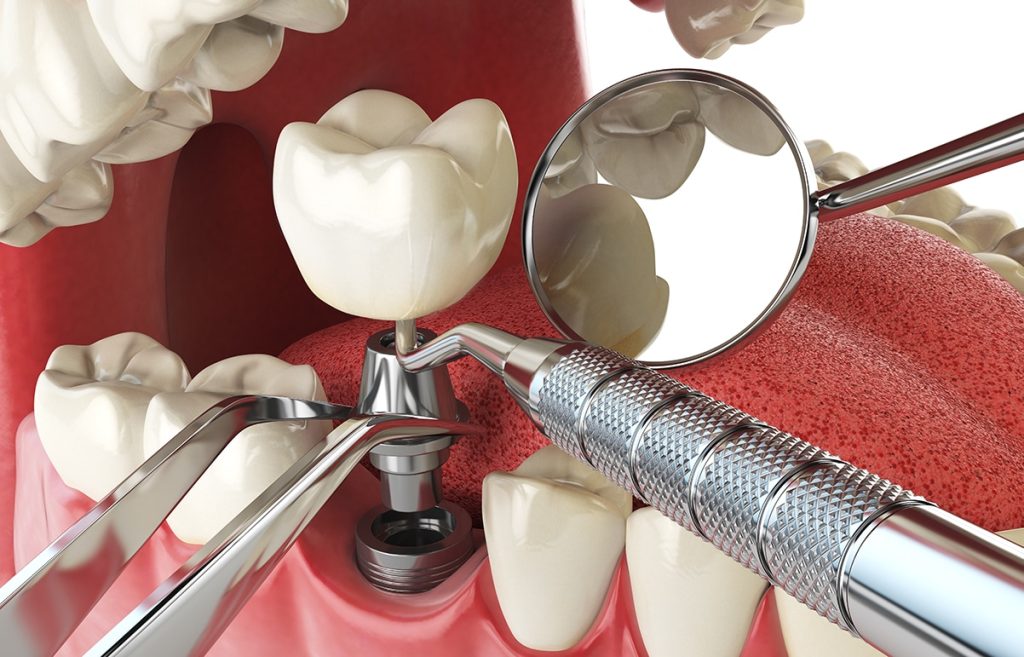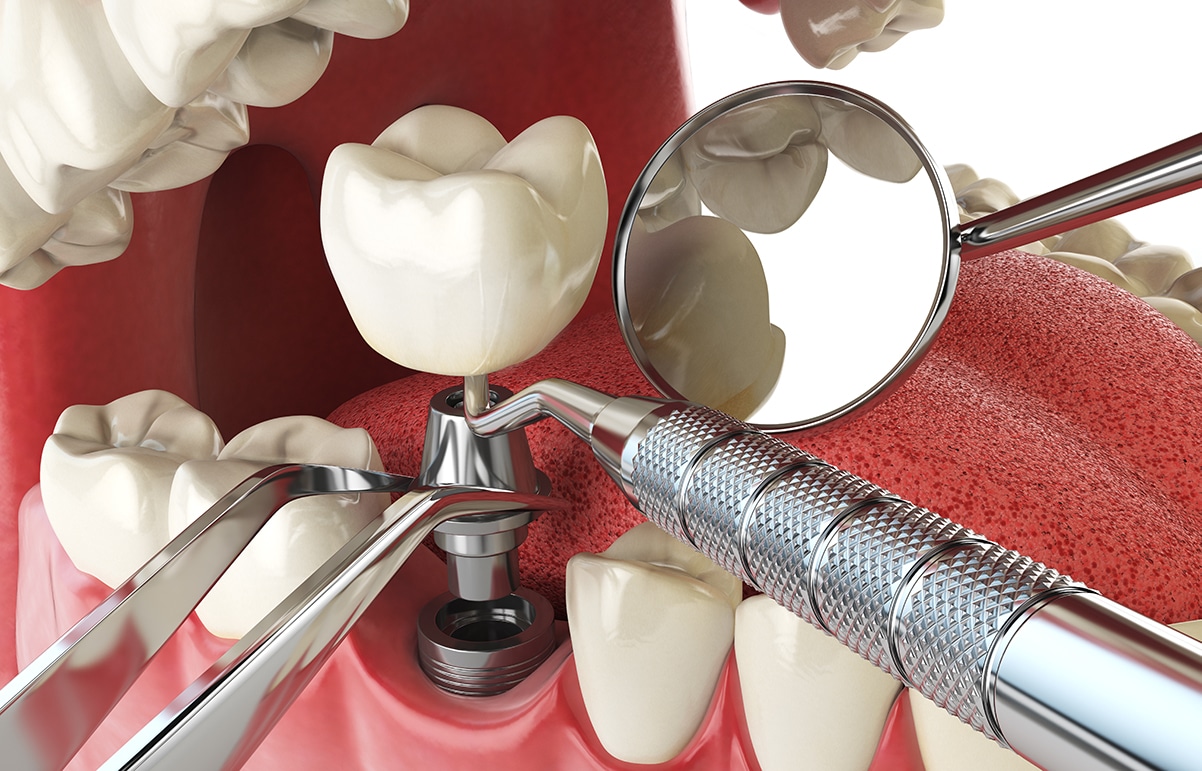Introduction
A beautiful, confident smile is a valuable asset. However, tooth loss can significantly impact both our oral health and self-esteem. Dental implants have transformed the field of dentistry by providing an effective and long-lasting solution to replace missing teeth. Let’s now explore the world of dental implants and understand how they work to restore your smile, oral health, and quality of life.
Understanding Dental Implants
Dental implants are prosthetic teeth that serve as a permanent replacement for missing natural teeth. Dental implants are surgically fixated into the jawbone. This offers a stable foundation for the replacement teeth, mimicking the look and function of natural teeth. Dental implants consist of three main components:
- Implant Fixture: The implant fixture is a small, screw-like post made of biocompatible materials such as titanium. It is surgically inserted into the jawbone, where it functions as an artificial tooth root.
- Abutment: The abutment is a connector or support that attaches to the implant fixture, protruding above the gumline. It serves as the anchor for the replacement tooth (crown, bridge, or denture).
- Restoration: The restoration is the noticeable or visible part of the dental implant. It can be a crown for a single missing tooth, a bridge for multiple adjacent missing teeth, or a denture for replacing an entire arch of teeth.
The Dental Implant Process

Dental implant placement is a multi-step process that typically takes several months. Here’s a detailed overview of how dental implants work:
- The dental implant journey begins with an initial consultation with a dental implant specialist. During this initial visit, your dentist will assess your oral health, discuss your medical history, and take X-rays or 3D scans to evaluate the condition of your jawbone.
- Based on the evaluation, the dentist will develop a personalized plan for your specific needs. This plan outlines the number of implants required, the type of restoration (crown, bridge, or denture), and the timeline for the procedure.
- The surgical phase involves implant placement. The dentist will insert the implant fixture into the jawbone through an incision. The gum tissue is then stitched back into place, and the healing process begins.
- Over the next several months, a process called osseointegration occurs. This is the key to how dental implants work so effectively. During osseointegration, the bone fuses with the implant fixture, creating a stable foundation. This integration ensures the implant is firmly anchored and can withstand the force of chewing and biting, just like a natural tooth root.
- Once osseointegration is complete, a second surgical procedure to attach the abutment to the implant fixture is performed. This minor surgery is done to expose the implant and prepare it for the final restoration.
- The last step in the dental implant process involves attaching the custom-made restoration to the abutment. The restoration is designed mimic your natural teeth, ensuring a seamless blend with your existing smile.
Advantages of Dental Implants
Understanding how dental implants work is important, but it’s equally essential to appreciate their many advantages:
- Durability
- Natural Appearance
- Improved Functionality
- Preserving Bone Health
- Enhanced Self-esteem
- Convenience
Who Are Eligible to Get Dental Implants?
Everyone is not a suitable candidate for dental implants. Several factors are considered to determine eligibility, including:
- Sufficient Bone Density
- Healthy Gums
- General Health
- Commitment to Oral Hygiene
Conclusion
Dental implants have massively transformed the way we address tooth loss, providing a reliable and natural-looking solution. Understanding how dental implants work is the first step in making an informed decision about your oral health. While the process may take several months, the long-term benefits are well worth the investment. If you’re considering dental implants, consult with a qualified dental specialist to determine if you’re a suitable candidate and embark on your journey towards a restored and confident smile.

